Why is The Pornstar Martini Cocktail So Popular?
Using data points to discover the story behind Pornstar Martini cocktail Trend.
15 March 2023 · 8 min read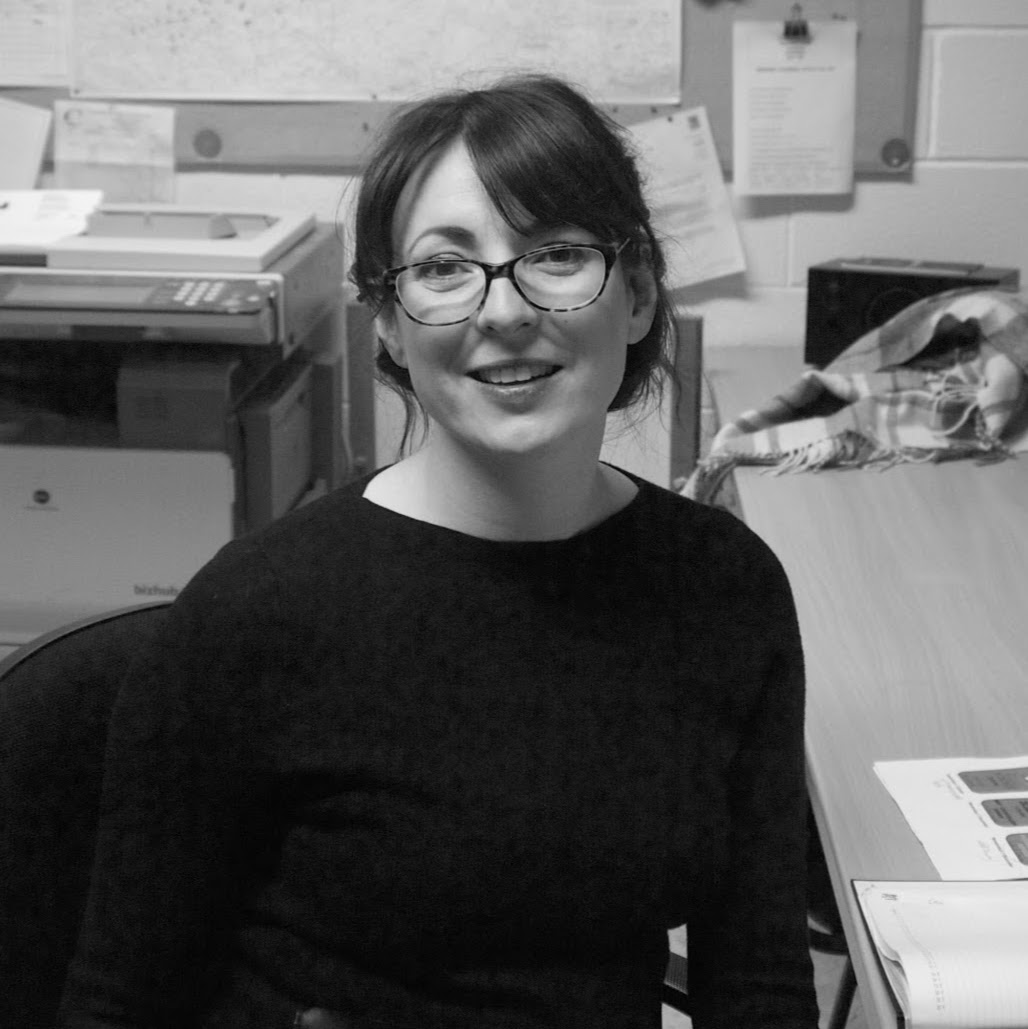

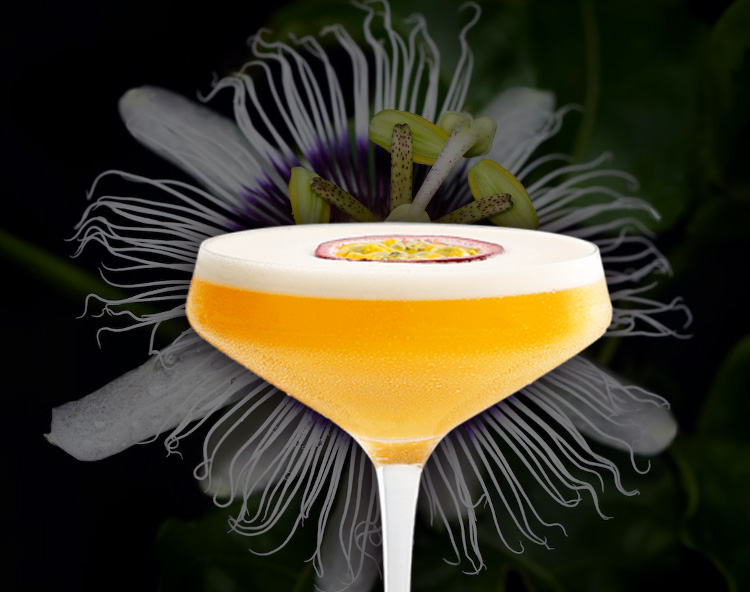
The CGA Mixed Drinks Report Q3 2018 labelled the Pornstar Martini cocktail the ‘most popular cocktail in the UK’. According to Revolution Bars, the Pornstar Martini cocktail was the most ordered drink in 2022. So what is behind the success of this drink: Why is it so pervasive, and what, apart from the flavour, makes people want to drink it in such copious amounts? There is more to British taste than simple flavour. Taste is a cultural sensibility as old as the hills. Creating a story from data can help us understand answer questions and spot trends. Using inference you take information you already know to contextualise knowledge from reliable data. You can develop a conclusion by integrating them. I’ve used data points in a timeline like lily pads to hop across time and space. I’ve then used inference to map the journey of the Pornstar Martini cocktail that helps us to understand the formulation of British taste in the current day.
Passionfruit: From the Rare and Exotic to the Easily Obtainable
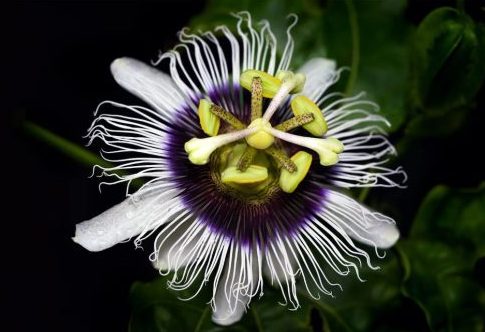
Fact 1: The passionfruit flower was used in indigenous Amazonian medicinal tea to heal epilepsy, hysteria and insomnia. Inference: Plants with medicinal powers are cultivated and cared for by their communities, which means that local rituals and cultivation first bought attention to the passionfruit vines when Europeans ‘discovered’ it. Fact 2: The first European written report of passionfruit came from Cieza de León, 1553, a civil servant based in Colombia (Ulmer and MacDougal 2004). In 1569, Nicolás Monardes, a physician from Spain, associated the passion flower morphology with the crucifixion of Christ. Missionaries in Brazil then used the passion flower as an illustrative aid to convert the indigenous population to Christianity. It was referred to as the ‘flower of the five wounds’. Carl Linnaeus settled the scientific name of the genus Passiflora (Latin for passion flower) in 1737 (Kugler and King 2004). Inference: Catholic culture was a global phenomenon in the sixteenth-eighteenth centuries. The power behind this usage will have increased the value of the passion flower through symbolism and ornamentation in Europe. In countries where passionfruit grows freely, people must have used passionfruit pulp as a suitable alternative or additional ingredient to lime in mixed drinks like the Caipirinha for as long as they’ve been distilling. However, there is an absence of data in English-speaking countries regarding when, how or if it was first mixed. Fact 4: We do know, however, there’s a twist on the Peruvian classic Pisco Sour cocktail called a Maracuyá Sour that uses passionfruit juice as well as lime. The Pisco Sour is a mash-up of American bartending and Peruvian heritage from the menu of Morris’ Bar 1916-29. We also know that the passion flower was discovered by Monardes in Peru, so it is an indigenous species.
"Some sources have inferred that the Morris' Bar was a simple saloon and relatively low class. However, almost 90% of the signatures contained in the registry are mainly from English-speaking foreign citizens. Among them, there are diplomats, miners, engineers, archaeologists, aviators, businessmen, lawyers, journalists, writers, tourists, and even sportsmen, some of them with their spouses.” — Guillermo L. Toro-Lira, Clarifying the legends from the history of the Pisco Sour
Inference: Is it possible that these well-to-do visitors were tasting locally made concoctions with American-style presentation? If so, does that make this the beginning of passionfruit’s journey into the then high-society of Western cocktail culture? Fact 5: While the first cocktail books in the Western canon were being penned, passionfruit is strangely absent from back bars. There are several mentions of grenadine syrup or pineapple juice as ingredients, so tropical flavours did abound. The first example I have found is in 1933 Hollywood Cocktails {3rd Edition} (1st Edition printed Nov. 29th 1933) ‘Sardi’s Delight Cocktail’ which uses six dashes of passionfruit juice (with thanks to Paul Bradley and his Bar Library Archive). Inference: It looks like passionfruit was not widely available in America during the late 1800s and early 1900s. Is that because of trade blockades, unstable crops, shipping challenges, or did it have a short shelf life? Fact 6: Passionfruit was hard to grow on a commercial scale. It wasn’t until farmers learned to graft disease resistant rootstock that they could scale up.
"In Hawaii, seeds of the purple passionfruit, brought from Australia, were first planted in 1880 and the vine came to be popular in home gardens. It quickly became naturalized in the lower forests and, by 1930, could be found wild on all the islands of the Hawaiian chain. In the 1940s, a Mr. Haley attempted to market canned passionfruit juice in a small way but the product was unsatisfactory and his effort was terminated by World War II." "New Zealand, in the early 1930s, had a small but thriving purple passionfruit industry in Auckland Province but in a few years the disease-susceptibility of this type brought about its decline." "Commercial culture of purple passionfruit was begun in Kenya in 1933 and was expanded in 1960, when the crop was also introduced into Uganda for commercial production. In both countries, the large plantations were devastated several times by easily-spread diseases and pests. It became necessary to abandon them in favour of small and isolated plantings which could be better protected.” "In Australia, the purple passionfruit was flourishing and partially naturalized in coastal areas of Queensland before 1900. Its cultivation, especially on abandoned banana plantations, attained great importance and the crop was considered relatively disease-free and easily managed. Then, about 1943, a widespread invasion of Fusarium wilt killed the vines and forced the undertaking of research to find fungus-resistant substitutes. It was discovered that the neglected yellow passionfruit is both wilt-and nematode-resistant and does not sucker from the roots. It was adopted as a rootstock and plants propagated by grafting were soon made available to planters in Queensland and northern New South Wales." — All from The Tayloredge Museum
Fact 7: A change came about when the Great Depression forced Europeans to invest in colonial outpost countries like Australia, New Zealand and Kenya. Suddenly passionfruit could be exported on a commercial scale from these Western trading points.
"No, XI.—The Passion Fruit Ordinance, 1937, [a Government bill from the UK] regulates and controls the passion fruit industry and provides facilities for the preparation for export and the marketing of the products of passion fruit. Provision is made for the appointment of an agency which shall have the sole right to purchase, prepare and export all passion fruit and its products grown in the Colony.” — Annual Report on the Social and Economic Progress of the People of the Kenya Colony and Protectorate
Fact 8: The United Kingdom Bartenders’ Guild held their first cocktail competition from 1st to 6th October 1934 at the Wine, Spirit and Catering Trade Exhibition. As reported by Daily Mirror on Oct. 2nd, one of the exhibition officials “was hoping that some of the entrants in the cocktail competition will introduce some new and rare ingredients from their own particular part of the world.” The winning cocktail from this national competition, Royal Romance, invented by John Perosino of London’s Punch’s Club, featured a very unusual ingredient; Pash, a dry passionfruit product created by Pashon Products Ltd of Slough, made of New Zealand passion fruit juice. As explained in the Rules and Regulations of the competition, “All ingredients must be easily obtainable in the English Market” and “If the winning cocktail is to become popular, the ingredients mustn’t be too costly, as the Committee reserve the right to refuse any entry that would not be a commercial proposition.” (With thanks to the UKBG Archive) Inference: Because of this stipulation in the rules, we can assume that Pash was a commercially viable product that was both available and affordable in the United Kingdom. Fact 9: Pashon Products Ltd of Slough is registered in the Index of Trademarks Issued by the United States Patent and Trademark Office in 1957 but goes out of business in the early sixties because of supply issues. Inference: Passionfruit beverages are sought after and internationally traded, but it is difficult to sell high volumes. Fact 10: Then passionfruit syrup gets a world stage thanks to the Tiki or Tiki-inspired drinks like the Cobra’s Fang, Hawaiian Punch and the Hurricane Cocktail. The latter contained a blended cordial called Fassionola. Developed by a US-based German immigrant chemist and his wife in 1916, the brand was coined Passiflora, then Passionola — a bright red passionfruit-flavoured syrup was intended for soda fountains and ice cream sundaes. Circa 1942, the Hurricane cocktail was born at Pat O’Brien’s Bar in New Orleans. America was thick in World War Two, and there was a grain shortage. The bar owner, Pat, was arm-twisted into buying some knockoff rum to get the whiskey he desired. So Pat had to come up with a drink to help him shift the less popular rum. He poured the cocktail into hurricane lamp–shaped glasses and gave it away to passing sailors; it garners international fame. In 1963, Trader Vic’s opens their first international tiki restaurant in London. Inference: American tiki culture influenced a change in cocktails, making bright colours, sweet syrups and exotic flavours the norm. Fact 11: Passoã passionfruit liqueur launches in 1986. Made by Bols, a Dutch liqueur company in trade since 1575, and merged with Rémy Cointreau in 2000 as the drinks industry was becoming increasingly conglomerate. Inference: The red, sweet, Brazilian passionfruit liqueur is cocktail friendly, easy to spot on a back bar, created by one of the biggest liqueur companies in the world, and by the time the Pornstar Martini cocktail is invented, supported by a global distribution system. The fragile passionfruit industry is strong enough to match desire in cocktail culture.
Vanilla Vodka: The Spirit of Singles Bars
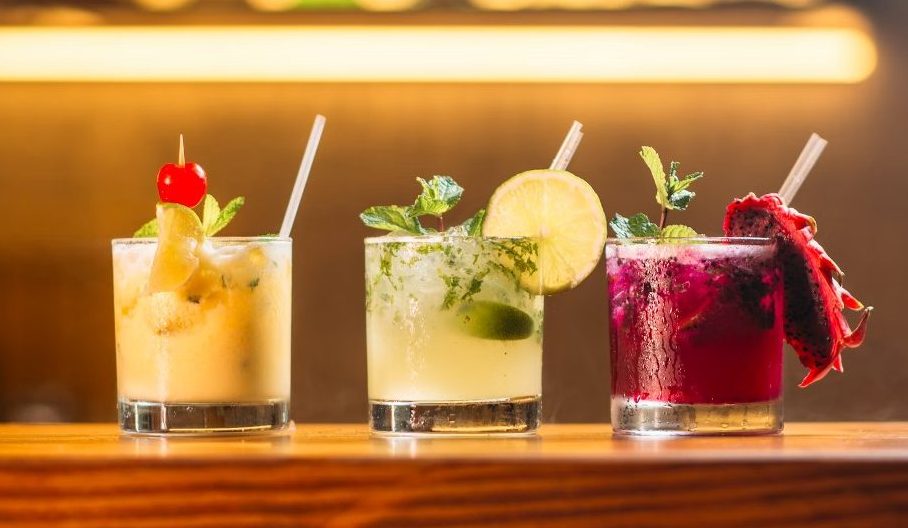
Fact 12: Then, in the 50s, along comes vodka. The colourless spirit, as synonymous with Russia as balalaikas and borscht, was suddenly everywhere during the Cold War Years. As William Grimes noted in Straight Up or On the Rocks, vodka sales exceeded those of the once-mighty gin in 1967. In 1976, vodka surpassed whiskey to become the country’s biggest-selling spirit. Inference: Why did this swift revolution happen? It may be due to the sudden doubling of the market. You see, men AND women, all of a sudden, drank vodka cocktails in high-volume bars. Fact 13: Before the invention of ‘singles bars’ women would drink classic cocktails at house parties. These cocktail parties would have informal food but classy dress codes. They were, more often than not, self-contained affairs. Then, in 1965, amid the sexual revolution of the swinging sixties, came Alan Stillman and the invention of the ‘fern bar.’ Stillman wanted to encourage women to drink in bars so that he could meet someone ‘special’. This simple concept led him to create the first TGI Friday venue in Manhattan with informal but well-made food, great cocktails, and simple, elegant homely decor. He put framed photographs on the wall, lit tiffany lamps for soft lighting, and placed house plants around the shelves to replicate the atmosphere of someone’s living room. The original TGIs bar happened to be near apartment buildings convenient for the airports, which were home to attractive air hostesses. These glamorous women spread the TGI word on their travels, and soon Stillman was invited to open franchise bars in other cities. Inference: Making vodka and juice-based cocktails like the Sea Breeze and Harvey Wallbanger began to make punters happy and bar operators money. They were modern, glamorous and sophisticated. The decor mattered. The glamour enticed people, and the informal atmosphere encouraged people to invite their friends. Fact 14: To keep the bartending standards high, bartender training, manuals and recipe books were developed and spread along with the TGI brand. This led to TGI Fridays bar becoming well known as a good training ground for great bartenders, where inventions like flair bartending and recipes with suggestive names like the Orgasm, Sex on the Beach and Sloe Comfortable Screw grew popular thanks to the highly professional servers. Inference: Bartenders cottoned on that suggestive cocktail names helped build sales of the vodka-based fruit (or cream) mixed drinks. Bartending was no longer a ‘service only’ job. Rockstar bartenders’ success and influence created a viable career path for inventive, creative and entrepreneurial individuals. Fact 15: These candy-bright, tropical juice-filled cocktails became a blueprint, and copycat bars opened all over the world. The first TGI Fridays opened in England in 1986, the same year Absolut Vodka produced their first mass-market flavoured Vodka (Absolute Peppar). Covent Garden, London, became the busiest Fridays in the world by 1992. Inference: Cocktails became mass-market in the UK. Palatable, session-able drinks in a relaxed environment allowed nicely-dressed people to meet at the bar, and suggestive drink names encouraged frissons to develop. Women could drink and flirt by ordering a cocktail with a wink and a nudge. Inhibitions were overcome. This gave them the social power to choose who they partnered with for the evening and overcome otherwise awkward social interactions. Fact 16: Grey Goose was created in 1997 by Sidney Frank and the brand’s Maître de Chai (Cellar Master), Francois Thibault. Super premium vodka was born. It was a huge success and was acquired by Bacardi in 2004. By 2003, Grey Goose, Absolute and Cariel had all launched premium vanilla-flavoured vodkas. Inference: With the success of premium vodka brands came huge brand budgets, with product launches in highly regarded venues like the Atlantic Bar and Grill and Met Bar, who sold highly-priced cocktails. The sought-after brand calls were encouraged through bartender training and kickbacks for menu listings.
Champagne: A Shot at The Big Time
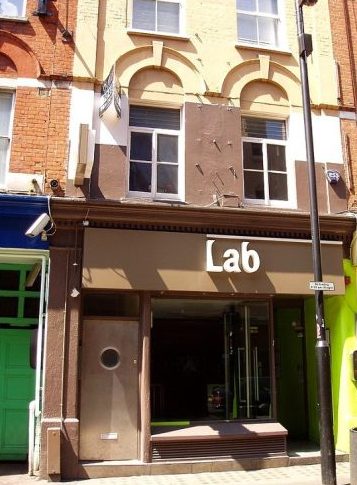
Fact 17: Ladette culture blended with FHM lad mags in the Great Brittania movement of the late nineties. Meaning paparazzi began hunting for pictures of influential people drinking. Cocktails were a part of that image, and ‘celebrity’ restaurants and bars made drinking look both glamorous and freeing. Inference: Cocktail bars became sites of unadulterated excess, where glossy looks and snazzy martini cocktails gave a gloss and polish and sense of occasion to visitors. Bartenders rubbed noses with the rich and famous, and if they played their cards right, could garner a rockstar reputation themselves. Fact 18: Douglass Ankrah was influenced by the idea of ‘professional standards of service’ and set up a training academy in London called The London Bar Academy. He and business partner Richard Hargroves opened their showcase bar in Soho, LAB, in 1999. Example opening menu drinks include the Very Berry, the James Bond-influenced Honey Ryder, a blended cocktail with half a fresh passionfruit in the ingredients, and the Hemingway Daiquiri. Inference: London was ripe and ready for a new premium drinks bar and wanted that mixture of lasciviously named juicy-vodka-based drinks presented in classic martini cocktail style. Everything that a Pornstar Martini cocktail mixes effortlessly together. The bar was such an instant success that Douglas was asked to write a cocktail book, Shaken & Stirred came out in 2004. Fact 19: Eyewitness accounts regarding the drink’s genesis cite Elcipse, Lab Cape Town and Townhouse bars. Some believe it was initially called the Maverick Martini, inspired by the Maverick Gentleman’s Club in Cape Town — a story Ankrah supports in interviews — others think it was always called the Pornstar Martini. A recent thread on Facebook had weigh-ins from Richard Hargroves, the co-owner of LAB, Jesse Herbert formerly with Cariel Vodka, Jamie Evans, former LAB employee but, as Roxanne Lautenbach another former employee said, “…It was only once the title was settled as the Pornstar Martini that sales started flying.” Inference: The contention regarding the Pornstar Martini cocktail’s original name gives the drink an alluring mystique. The combination of sweet ingredients, exotic flavours, naughty excess of a shot on the side and the brazen name played into the Cool Britannia zeitgeist. Fact 20: When Julien de Feral interviewed Douglas for an Imbibe article, he mentioned the serving style was critical; “Ankrah felt that the champagne gave the otherwise tropical drink a glamorous edge.” “Apart from flammable nonsense designed to get you drunk… that generation of London bar patrons was not, at that time, much used to theatre. But, with its two glasses and a spoon, there was a drink that stimulated discussion and explanation.” — Julien de Feral. Inference: The flavours were not the only aspect of this drink. The name, the venue, and the WAY it was served all coordinated to make this simple mix of four flavours entertaining. The serve allows some autonomy from the drinker and the methods of service prompt conversation.
Conclusions
So why is the Pornstar Martini cocktail so popular? It has an indelible format; ingredients that look expensive, taste exotic but are readily available balanced together in an attractive, interactive cocktail with unashamed bags of sass. It is both charming and silly, charged with bravado and impishly simple. It will inebriate you enough, but not too much. It will create conversation and mystery, make you feel like million bucks, yet it’s only just over a tenner. It is a die-hard success in English-speaking countries because it is entrenched in years of Western bar culture, and now it is a classic, it will carry through time on waves of revivals. ———— The views and opinions expressed in this article are those of the author and do not necessarily reflect those of Freepour.









